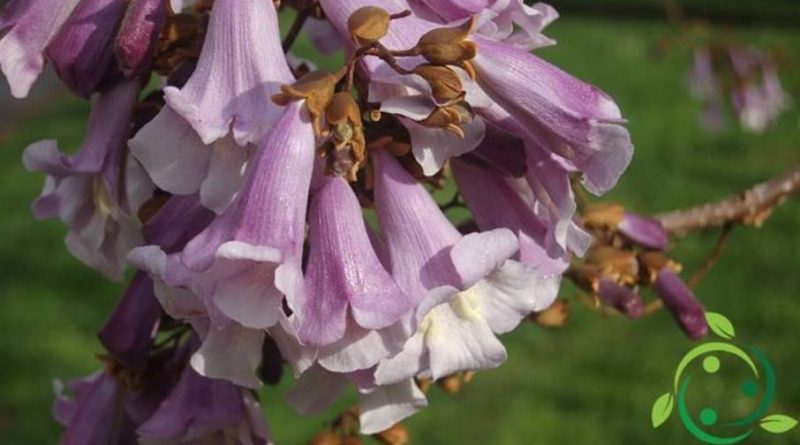How to grow the Paulonia
How to grow the Paulonia
The Paulonia (Paulownia tomentosa Steud.) is an arboreal species of the family Scrophulariaceae, native to China. Within the genus of the Paulonia there are several species but, today, the most widespread and cultivated, is the tormented Paulownia.It is a deciduous tree characterized by a rapid growth that allows it in a few years to exceed 5 meters of height. The Paulonia is a tree with a robust root system, with a sturdy and erect trunk and covered with a hard and smooth bark of light gray color. The crown is round and elegant and is composed of a dense interweaving of branches covered by large heart-shaped dark green leaves and at the end of spring produces white or lilac flowers, fragrant, gathered in large corymbs, the autumn fruits are oval capsules, covered with a golden down. In this sheet we will see how to grow the Paulonia with the most appropriate agronomic techniques and the most useful measures. Paulonia is a plant that should be grown in sunny areas even if it grows well even in the shade; it is a species that resists well the winter frost and the summer heat. The Paulonia is a plant that grows without problems in any soil, even in places unfavorable for other crops and adapts to all soils, provided they are well drained. However, if the cultivation of the Paulonia is for the purpose of wood production, this plant needs more loose, deep and with a great availability of water, otherwise its main capacity which is to produce woody masses in a short time (rapid growth) decreases noticeably and the economy of its cultivation is lost. If it is grown for ornamental purposes this is a minor concern.
For this reason even if the adult plants are satisfied with rains while the young ones are watered only during periods of prolonged drought if the soil is completely dry, in the cultivation for industrial purposes (wood production) the plant must be in conditions to always draw to large quantities of water, whether it is able to draw it in deep and moist soils, or whether it is supplied as a rescue irrigation.For fertilization it is advisable to plant, at the time of implantation, the organic fertilizer in the same hole where the young seedling will be placed well mature. Subsequently, in the annual fertilization, at the beginning of the spring the organic fertilizer is mixed in the first layers of soil (the mature manure is excellent). The Paulonia can be propagated by seed in spring and by woody cutting in autumn. As for the seeds, they are germinated in cold seedbeds (outdoors) and in the following autumn they can be planted. On average, a plant reproduced from seed, in order to flourish will take 6 years. In the propagation by cuttings, cuttings of at least 8-10 cm in length should be obtained; these must be rooted in a mixture of sand and peat. The container that receives them must be kept in the dark at a temperature of 18 ° C. At the end of February, the Paulonia cuttings should then be exposed to light, until the leaves appear. Once advanced spring the cuttings will be transferred into larger containers and only in autumn they can be permanently put away. In order to obtain a more harmonious growth and a more compact development of the crown of the Paulonia, this should be pruned vigorously after flowering. If, on the other hand, the cultivation is for commercial purposes (wood production), the pruning must be performed only to promote the internal aeration of the foliage and the thinning of damaged or shriveled branches. The Paulonia is a plant that resists well to attacks of aphids and cochineals but fears the attacks of Armillaria a fungus that can cause, especially in heavier and poorly drained soils, serious damage to the roots and trunk and the consequent death of the plant. In cases where the symptoms of the disease begin to manifest, it is advisable to remove and burn the affected branches and disinfect the collar of the trunk with copper-based products. In cases of attacks of this fungus at the roots and with very compromised plants, the advice is to completely remove the plant and burn trunk and branches to prevent the spread of the disease.

